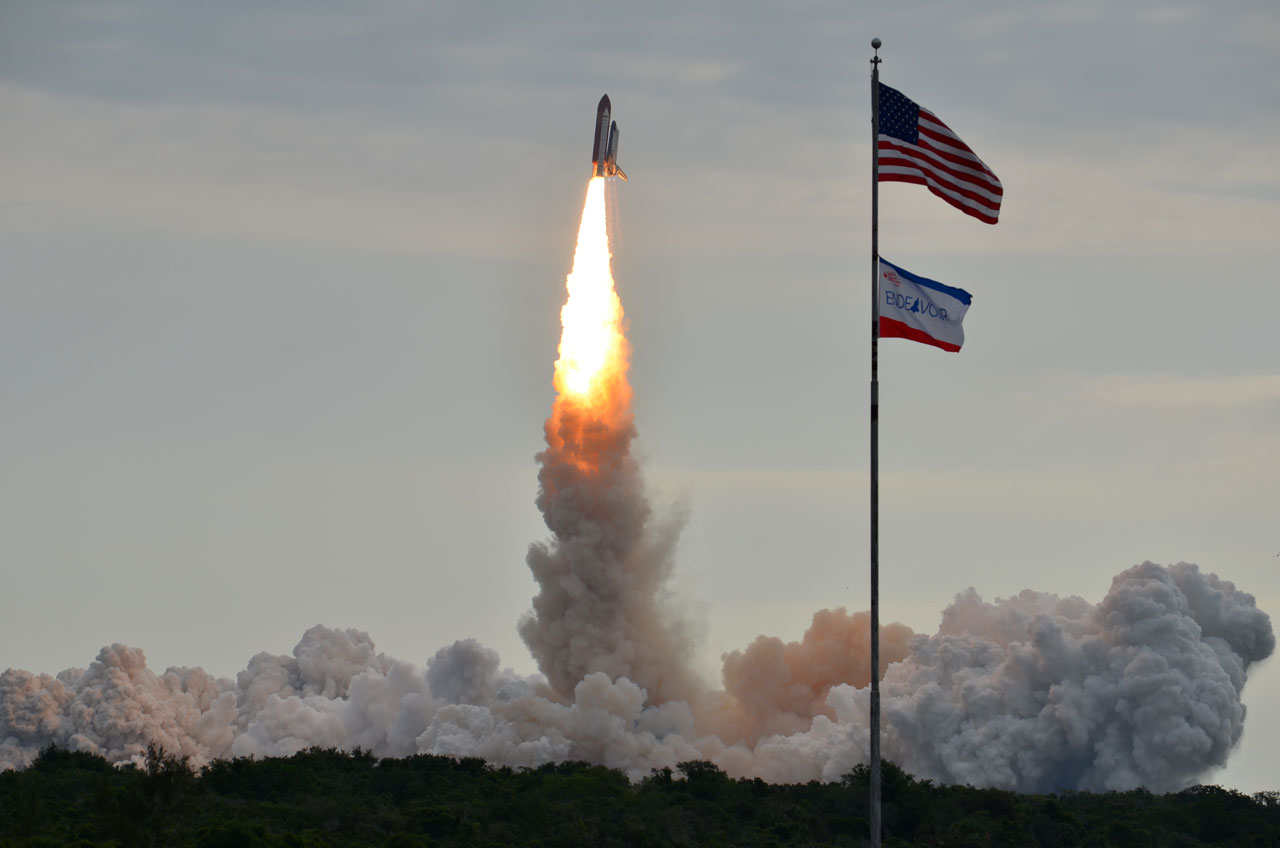For NASA, No Time for Tears After 2nd-to-Last Shuttle Launch

CAPE CANAVERAL, Fla. — In a bittersweet moment for thousands of space fans and NASA workers, the space shuttle Endeavour lifted off for the last time today (May 16). But for NASA, there's no time for tears.
The dedicated engineers, astronauts and other officials close to the program will have to wait to mark the achievement of Endeavour's 25th and final launch, because for now, there's work to be done.
"We're going to wait for her to come home and then we'll celebrate in some special way," launch director Mike Leinbach said after the liftoff. [Photos of Shuttle Endeavour's Last Launch]
Busy flight demands attention
Endeavour is on a 16-day mission to the International Space Station to deliver an ambitious cosmic ray particle detector and a shipment of backup hardware for the orbiting laboratory. [Video:Endeavour's Lift-Off into History]
It's a "very packed mission," said Mike Moses, chair of the shuttle mission management team. "The crews are going to be very, very busy, very challenging."
That doesn't leave much time for reminiscing about the nearing end of NASA's 30-year space shuttle program. [Shuttle Endeavour By The Numbers]
Get the Space.com Newsletter
Breaking space news, the latest updates on rocket launches, skywatching events and more!
"The real tribute is, I really challenge the team and challenge all of us to treat each one of these missions as much as we can, just like a regular mission," said Bill Gerstenmaier, associate administrator for space operations. "I want it to feel like this isn't the last mission. They've done a tremendous job of being able to stay focused, watch what's going on. I feel real privileged to be considered a part of this team that's pulled this off. It's not easy."
The shuttle's main payload, the $2 billion Alpha Magnetic Spectrometer, which will search for cosmic ray particles to probe the mysteries of dark matter, antimatter and strange matter, is a fitting final mission for the well-traveled orbiter, officials said.
"This is a really world class instrument," Gerstenmaier said. "It fits very well with space station. I think this is a pretty special way to cap this sequence of flights, to bring the AMS up on this flight."
Shuttle era's end in sight
Endeavour's mission is the penultimate flight for NASA's 30-year old space shuttle program, which has only the July liftoff of the shuttle Atlantis remaining before all three of the reusable U.S. orbiters are retired. [Photos: Shuttle Endeavour's Final Mission]
After completing their final missions, Endeavour, Atlantis and their sister orbiter Discovery will be sent to museums around the country for public display.
Endeavour will head to the California Science Center in Los Angeles, while Discovery will go to the Smithsonian National Air and Space Museum's Udvar-Hazy Center outside of Washington, D.C., and Atlantis will stay here at the Kennedy Space Center's Visitor Center.
Once NASA finishes flying the space shuttles, the agency will shift its focus toward flying missions beyond low-Earth orbit to an asteroid and Mars, as well as continuing to operate the International Space Station to at least 2020.
"In the near term, the focus is really on station, to utilize the heck out of station and at the same time build a concrete plan on how we're going to get out of low-Earth orbit," Gerstenmaier said.
You can follow SPACE.com senior writer Clara Moskowitz on Twitter @ClaraMoskowitz. Visit SPACE.com for complete coverage of Endeavour's final mission STS-134 or follow us @Spacedotcom and on Facebook.
Join our Space Forums to keep talking space on the latest missions, night sky and more! And if you have a news tip, correction or comment, let us know at: community@space.com.

Clara Moskowitz is a science and space writer who joined the Space.com team in 2008 and served as Assistant Managing Editor from 2011 to 2013. Clara has a bachelor's degree in astronomy and physics from Wesleyan University, and a graduate certificate in science writing from the University of California, Santa Cruz. She covers everything from astronomy to human spaceflight and once aced a NASTAR suborbital spaceflight training program for space missions. Clara is currently Associate Editor of Scientific American. To see her latest project is, follow Clara on Twitter.









